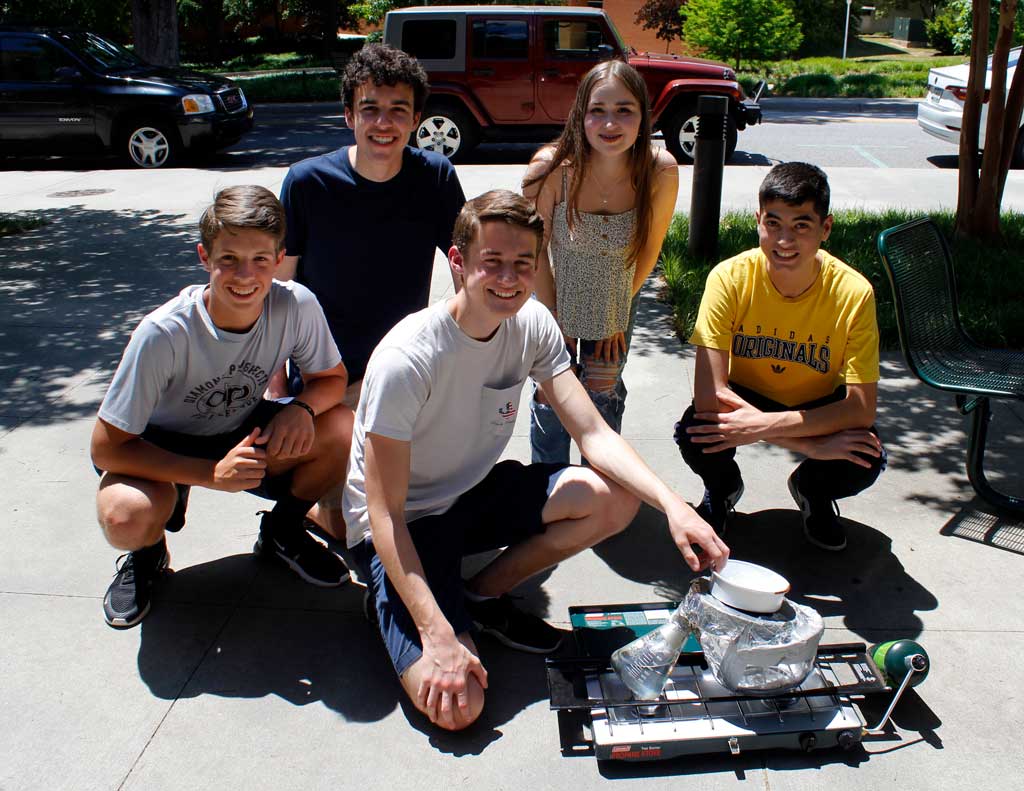

Have you ever literally ‘felt the beat’? That is, have you felt rather than heard a sound? This happens when sound waves have a frequency too low for you to hear. They are called infrasounds and have frequencies below 20 Hz (the lower bound of human hearing).
There are many natural sources of infrasound, including volcanic eruptions, thunder during severe storms, earthquakes, and some animals like elephants which use it to communicate with each other. Find out more about how elephants do this by visiting the Elephant Listening Project’s page Deep into Infrasound.
Scientists and engineers have designed infrasound sensors that are used to give advance warning of earthquakes, volcanic eruptions, and even avalanches from many hundreds of kilometers away. They can also be used to track the location, direction, and speed for severe storms like hurricanes.
A network of monitoring stations scans the globe for atmospheric and subterranean (under the ground) nuclear explosions. Find out more about this network and how it works by watching this video:
The reflection of man-made infrasound is used to peer below the surface of the planet and investigate its internal structure. We can identify possible locations of oil and natural gas resources as well as distinctive rock formations in which different minerals are likely to be found.
Blue and fin whales have been observed to produce infrasonic calls to communicate. Because of their very low frequencies, these waves can travel many hundreds of kilometers through the ocean.
Rhinos and alligators also produce infrasound to communicate.
While infrasound is sound, we cannot hear because it is too low, ultrasound is sound we cannot hear because its frequency is too high. It is above the 20 000 Hz threshold of human hearing. However, just because we cannot hear it does not mean that other animals can’t. Below is a summary of the frequencies that different animals can hear.
You will notice that bats can hear very high pitches sounds. They produce these sounds and then listen for the echo that bounces off different objects in their environment. By analysing how long the echo takes to return and how the frequency of the echo differs from the original sound, bats can ‘see’ through sound. This is called echolocation.
While we cannot hear infrasound, these sound waves can often affect us negatively. To find out more, watch How to See Ghosts (using Infrasound).
Watch these videos to learn more about echolocation

Not to be outdone, however, humans have devised our own echolocation systems which we call SOund NAvigation and Ranging or SONAR. They also use ultrasound to image environments which we cannot see with light. Active SONAR systems send out pulses of sound and then listen for the echoes. The time taken for the echoes to return and how their frequency has been changed allows these systems to produce visual maps of the environment and the motion of other objects in it. Submarines use SONAR to navigate. Sometimes SONAR systems are used on ships to create detailed images of the ocean floor.
How do you think bats are able to tell if an object in their environment is moving towards or away from them?
HINT: What do you hear as an ambulance approaches you and then drives past?
Watch these videos to learn more about how SONAR works.
Besides being able to see what’s ‘out there’, we can also use sound to see what ‘in here’. Engineers have designed machines that use ultrasound to image the inside of the human body. They are imaginatively called ultrasound machines!
They use special crystals called piezoelectric crystals to produce sounds of very high frequencies. A small electric current causes the crystals to vibrate very quickly. The resulting sound waves penetrate the skin and are then reflected in different ways by different internal organs and structures. These ‘echoes’ are picked up by the very same piezoelectric crystals which turn the echoes back into electronic signals. These signals are processed by a computer to produce the image we see on screen.

Functional ultrasound makes use of the Doppler effect to not just image the inside of the body but to also measure the hardness and softness of different tissues as well as the movement of blood inside blood vessels.
RADAR works in a very similar way to SONAR except that it sends out and listens for the echoes of electromagnetic radio waves, not sound waves.
Piezoelectric crystals are truly fascinating. To find out more, watch:
How about making your own piezoelectric crystals? It’s much easier than you think. Learn how:
Learn more about ultrasound in these videos:
Take a look at how the technology behind Ultrasound actually works and how it can 'see' inside your body.
Explore the physics of ultrasound waves and how they interact with parts of the human body.











